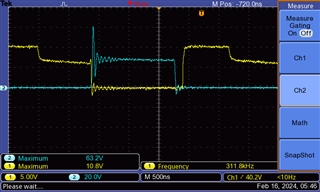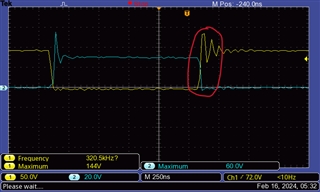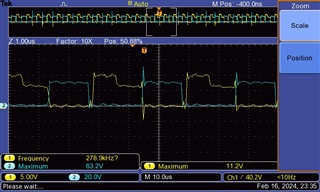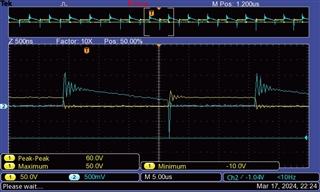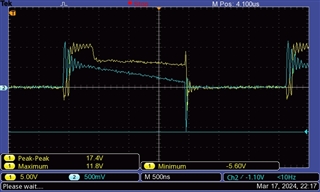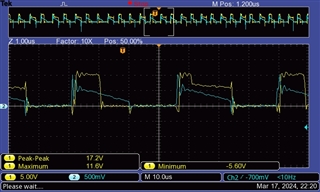Other Parts Discussed in Thread: LM358B
We are attempting to use 24612 for converting our existing DC-DC converter with flyback topology from diode rectification to synchronous rectification. Models are 12V 2.5A or 5V 6A. At present we are using the 24612-1EVM for trials on the low side.
R3 - 4.7R and C3 is 1000pf.
We are unable to boost the efficiency by any significant number.
The readings below is the end to end but does not include any bridge diodes.
Existing 12V Diode Rect 88% eff. With 24612 89%. Output power 24W.
Existing 5V Diode Rect 84%. With 24612 86.5%. Output power 17.5W.
The converter operating at 320Khz +/-10% dithering. We have tried to reduce to 250Khz. It has mitigated the shoot-through a little, but there is no noticeable improvement in efficiency. We have even attempted to use a 60V Mosfet with about 11mOhm RDS.
Using ST SRK1000 in a stock configuration, we find a 1%-1.5% efficiency gain over the 24612-1.
Enclosed two scope images. One is Vgs (yellow) vs Vds (blue) of the secondary FET Q1. The second is Vds Primary FET (yellow) vs Vds of Q1 secondary FET (blue) on the EVM.
Your thoughts on any parameters we can tweak to attain 91%+ efficiency? We really would prefer the TI part.
Thanks in advance.
Dave
